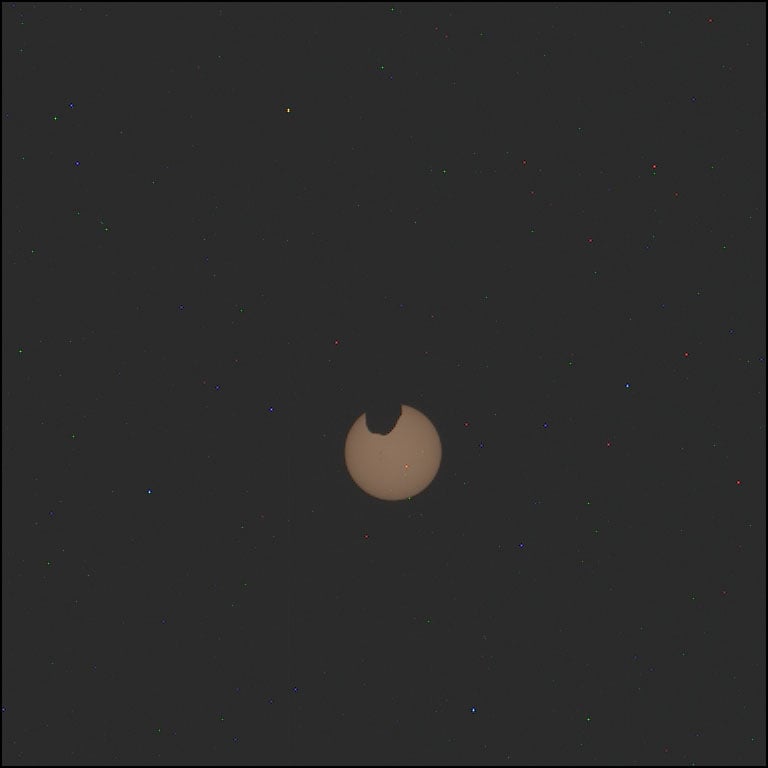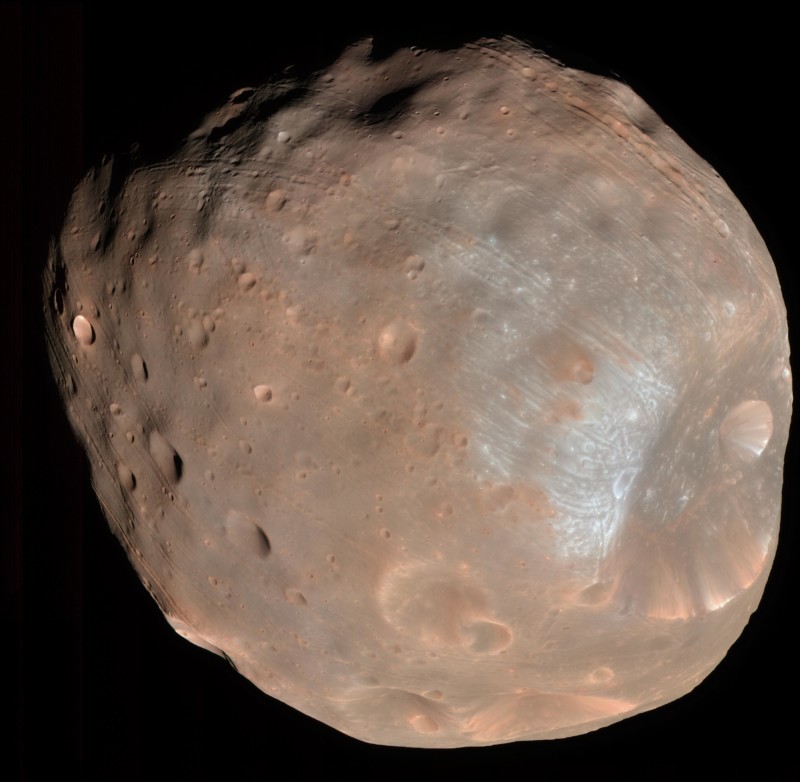NASA Captures Martian Eclipse That Looks Like a Pair of Googly Eyes
![]()
The Mars Perseverance Rover captured an eclipse last week from the surface of Mars as a moon passed in front of the Sun.
The potato-shaped Martian moon called Phobos crossed the Sun on February 8 which was picked up by the explorer vehicle that is nicknamed Percy.

![]()
Phobos, which means “Fear” in ancient Greek, is too small to create a total eclipse so rather than blocking out our nearest star it makes a silhouette as it transits the solar surface.
The Jet Propulsion Laboratory uploaded 68 images of the eclipse which was recorded on Perseverance’s left Mastcam-Z camera.
The imager is one of two scouting cameras attached to the mast of the Perseverance. Space.com put the images together so they make a neat timelapse.
When solar eclipses happen on Earth, the Sun is fully eclipsed by the Moon. The Sun is 400 times bigger than the Moon but handily the Sun is roughly 400 times further away from Earth making them appear the same size in the sky from a stargazer’s perspective.
“Each time these eclipses are observed, they allow scientists to measure subtle shifts in Phobos’ orbit over time,” NASA explained after a previous eclipse in 2022.
“The moon’s tidal forces pull on the deep interior crust and mantle of the Red Planet; studying how much Phobos shifts over time reveals something about how resistant the crust and mantle are, and thus what kinds of materials they’re made of.”
Oh, this?
Just a partial solar eclipse.
As seen on Mars.
Yesterday. pic.twitter.com/RIjJ3eLWDV
— Paul Byrne (@ThePlanetaryGuy) February 9, 2024
There is a plan in place to visit Phobos: The Japan Aerospace Exploration Agency (JAXA) will launch the Martian Moons Exploration (MMX) mission in 2026.

Space notes that MMX will be tasked with bringing grains of dust back from the tiny moon which will hopefully provide the answers as to how Phobos came into Mars’ orbit.
Image credits: NASA/JPL-Caltech/ASU